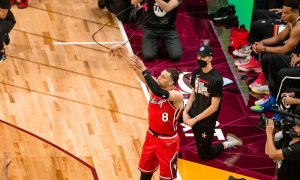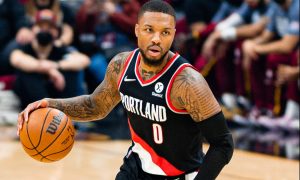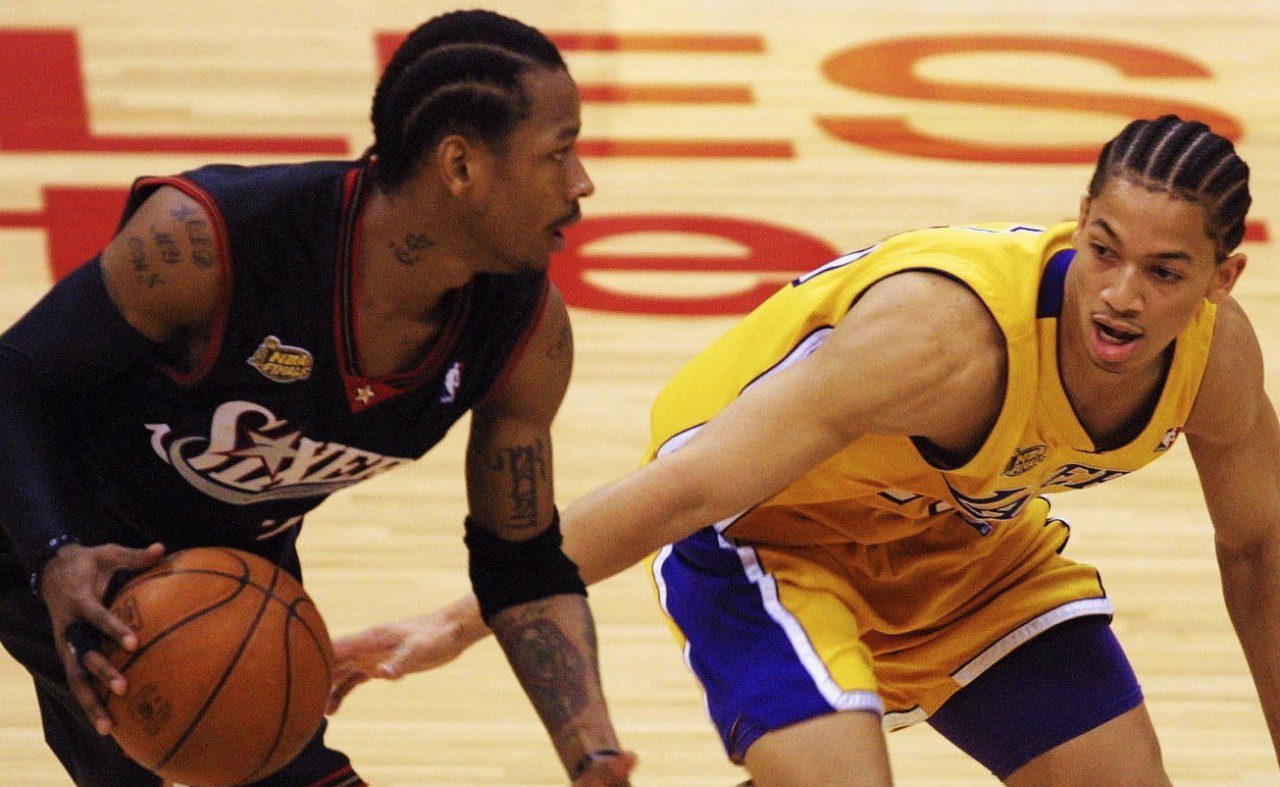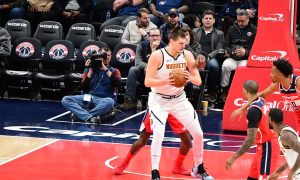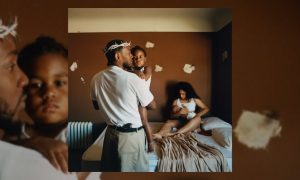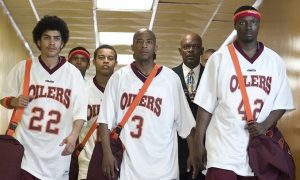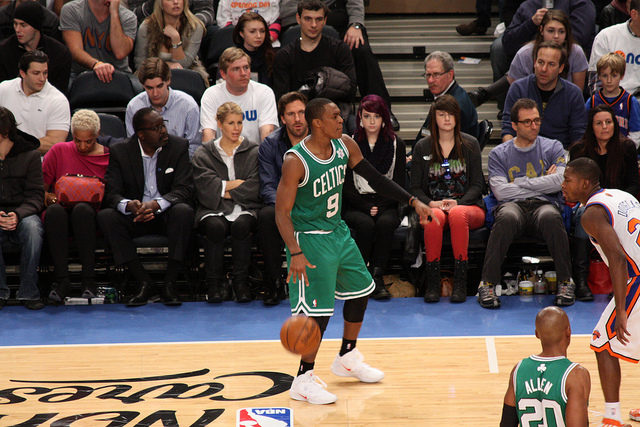
Image courtesy of Kowarski/Flickr.
Rajon Rondo is a notoriously smart guy. So when he tweeted, as our very own Aaron Lanton noted in The Latest NBA Dope, “29,233,380 secs,” there was good reason to believe that it had some significance. It turns out that all of those seconds total just over 338 days, which is the span of time between his ACL surgery last February and the Boston Celtics’ game on Friday versus the Los Angeles Lakers.
The idea here appears that Rondo will be making his return, after missing almost a year of basketball, against the Lakers in a mere couple of days. This notion was further corroborated when Celtics head coach Brad Stevens said there’s a chance he plays Friday.
At first glance, this is great news for the Celtics. They get their best player back, meaning that Jeff Green is no longer their first option, which is always cause for celebration. Rondo is an elite passer and freak athlete, and despite his lack of ability to stretch the floor, he is still capable of scoring effectively when motivated to do so.
The thing is, Rondo might not be able to improve the Celtics’ record significantly and here’s why: First, Boston is worse than their record says. They had a 12-14 start and a point differential of -0.8. Point differential is one of the best indicators of a team’s future performance, so 26 games into the season it appeared that the Celtics were actually going to be able to hover right around .500. However, they’re 1-12 since with a point differential of -10.0. This indicates the start to the season was a bit of an aberration, and the Celtics are what we thought they were going to be coming into the season: one of the worst two or three teams in the NBA.
The second issue with Rondo is that we’ve never seen him on a bad team (well, not since his rookie year when Rondo wasn’t Rondo yet). Rajon can’t shoot three-pointers and even when he’s a couple steps inside the arc, it’s not rare to see his defender sagging off him in the paint. The Celtics rank 23rd in the league in three-pointers attempted and 26th in the league in three-point percentage. This general lack of shooting means it will be more difficult for Rondo to create baskets for others (his greatest strength), and also it will be harder for Rondo to get into the paint where he does most of his damage.
Lastly, Rajon has a reputation for being difficult to deal with. This is a reputation he earned while being on a perennial championship contender and playing with three Hall of Famers. If things go poorly upon his return, it could get ugly, and Rondo’s attitude could be a serious problem.
Having said all of this, Rajon is still a great player, all one needs to do to see this is go check out the film of his 44 points, 10 assists, eight rebounds game in the 2012 Eastern Conference Finals.
http://www.youtube.com/watch?v=ndyfsS0bFK8
His addition will make Boston better; it’s just a question of how much, which is where it gets awkward. The Celtics don’t want to get better. They are in full-blown rebuild mode and they want to be bad so that they can get the best draft pick possible.
So if Rondo’s return does make the Celtics significantly better, which is certainly no forgone conclusion at this point, it will be interesting to see how management handles it. There are three options, more or less. One is to trade him. If Danny Ainge can get some young assets for Rondo, look for this to happen. Rajon Rondo is 27 years old and in his prime years, so why keep a star in his prime if you’re trying to be bad.
If the right trade doesn’t come along, there’s always the possibility that he gets “injured” a al David Lee and the Golden State Warriors in 2012. He’ll sit out for two months with something like “knee soreness” which isn’t even an injury as much as it is a symptom of an injury. This is the moment when a team goes from “rebuilding” to “tanking.”
The last option would be to just let it play out and see if this terrible roster and Rondo can live up to its expectations: lose a lot. No matter how it plays out, the return of Rajon Rondo is a good thing as the NBA gets one of its stars back.

